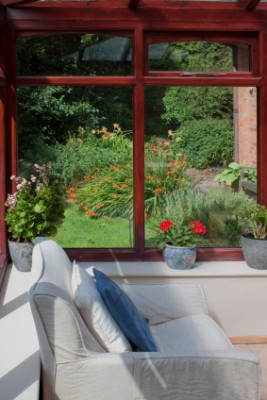 Old windows can have a significant impact on your energy bills. Old single-pane windows can have poor thermal performance and the frames may become worn, creating drafts. These windows should be replaced with double-pane or triple-pane windows to improve energy efficiency and reduce energy costs. The features that you choose for replacement windows will determine the savings you see and where you live.
Old windows can have a significant impact on your energy bills. Old single-pane windows can have poor thermal performance and the frames may become worn, creating drafts. These windows should be replaced with double-pane or triple-pane windows to improve energy efficiency and reduce energy costs. The features that you choose for replacement windows will determine the savings you see and where you live.
Window Material
Your home’s energy efficiency is directly affected by the material you choose to replace your window frames. Vinyl is a very energy-efficient material. It is made from PVC and is resistant to water. Vinyl is easy to maintain and can insulate well by itself. However, you can add insulation to increase its thermal performance. Fiberglass can also be combined with other features to make it more energy efficient. Your dealer can help you choose the best option for your unique aesthetic and needs when you customize your windows.
You can upgrade your windows to vinyl or a newer material, as well as make sure that you close all drafts. This can increase energy efficiency and reduce the U-factor. The U-factor is a measure of how efficient a window’s insulation and energy efficiency is. You can improve the U-factor of your windows and make them more energy efficient. These energy-efficient features include:
● Additional windowpanes: Double-pane windows offer a significant improvement over the single-paned windows of the past. You can add another pane to increase your energy efficiency and thermal performance.
● Argon gas: You might be able to fill in the gaps between your windowpanes using argon gas. Because argon gas is slower than air, heat transfer will be reduced, and your home’s temperature will remain stable.
● Low E coatings: These are microscopic metallic coatings that are applied during glass manufacturing. They reduce heat transfer by reflecting UV rays and sunlight, keeping your home cool in summer and warm in winter.
● Additional insulation: You can also add foam insulation to certain frames to improve the performance of your windows.
Window Direction And Climate: When calculating your energy savings, you should also consider your climate and the SHGC rating (solar heat gain coefficient). This rating is essentially a rating that shows how well the windows block heat from entering the house.
Low SHGC Rating: Consider the direction your windows face and how it relates to your climate. If you live in a hot, dry climate, and the window you’re replacing faces the sun most of the day, you will likely let a lot of heat in. This can make your home uncomfortable and increase your cooling costs. These windows should have a low SHGC rating. This means that they will be better at keeping heat out and radiation out.
High SHGC Rating: For windows with low sunlight, it is better to choose a window that has a higher SHGC rating. This will capture heat more efficiently in colder climates. This will keep your home warmer and may reduce heating costs.
How much you can save on your windows after they are replaced will depend on the combination of window material, energy efficient features, window direction and climate.
If you are looking to replace old windows, contact the professionals at Tollefson Bros. Exteriors at (952) 881-2218 today!
